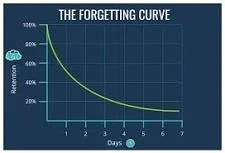Rethinking Leadership Strategy: How to Develop Top Drawer Talent
Building top tier executive talent? Scratch traditional training programs. Here's what works instead.
I hardly remember anything I learned at leadership conferences. However, I do remember the drinks at the bar afterwards.
Be honest, do you?
Leadership development is not a one-time event. Even when I thoroughly took notes and downloaded the 30 page powerpoint decks in the hopes that I would retain the knowledge, the truth is… I rarely did.
I once worked for a CEO who always questioned the value of “conferences” and leadership training events. I used to believe it was just because he wanted to keep a sharp eye on expenses (he did!), however in retrospect, I believe his smart skepticism contained a deeper wisdom.
“What do you actually learn and apply from conferences?”
I tend to agree with him. When I reflect on my executive leadership path, it wasn’t the industry conferences or 3-day leadership events that I remember. They had a limited impact on my behaviour when I returned to the office. Why? Because leadership training that doesn’t deliver on behavioural change does not link to results. Remember the forgetting curve. We lose 70% of what we learn within 24-48 hours and over 90% after one week. Instead, the insight I gleaned from reflecting on my relationships, as well as my leadership “successes and messes” has proved far more enduring.
The Forgetting Curve
The antidote to forgetting is designing a leadership training program that is strategically spaced out with opportunities for practise and reflection. Development needs to mean something to the participants. If it doesn't, then you're throwing money away. When leaders walk away from a coaching call or a workshop having “felt something”, the chances of application skyrocket. Every leadership development investment must include a commitment to application, and a trusted feedback process in a safe and trusted group container. That’s when the learning becomes much stickier.
Developing top-drawer talent is a process that happens over time. It's rarely a one-time event. It happens over weeks, months, and sometimes, even years. A best-in-class development program - whether that is a succession plan or an individual development plan - is an organization’s gift of time to key leaders.
Below, I break down the three critical elements of a leadership strategy that creates top-drawer talent.
1. Expert Coaching
Bar none, you can’t lead well if you don’t learn to trust yourself. A qualified coach uses skilled questioning to access a leader’s wisdom and help them make better decisions. A coach will help you explore your own mind. While organizations tend to hire executive coaches on an individualized basis, I recommend group coaching to help leaders access other people’s brains and thought experiences. Together, with a group of peers, you don’t feel alone and group cohesion creates resonance. To add, coaches are trained to observe your behaviour, and they help leaders with personal and professional skills that you don’t find in general trainings. The skills you learn in coaching compound year after year because the process helps leaders understand themselves and “get out of their own way”.
2. Wise Mentoring
A mentor is often someone a few steps ahead of you in their career that is willing to share advice. Earlier in my executive career, when I was promoted to a Head of HR role, I chose a global CHRO as my mentor who was invaluable in helping to provide industry insight, navigate internal politics, and position my language to senior leaders up the chain. Mentors are perfect in global organizations who have centralized resources that roll down to you. The key word in selecting a mentor is “wise”. When you choose well, a wise mentor will help you fill in the gaps and build key relationships, but doesn't allow you to outsource critical thinking to them. The purpose of a mentor is to help you enhance your critical thinking skills, not tell you what to do.
3. Thought Leadership/Training
Thought leadership occurs when an individual becomes a strong voice or expert in their field. It can take on the form of an industry expert talk, a specific training, a written publication, or the promotion of several other highly visible opinions in a number of different mediums. The key is thought leaders offer insight and guidance and are well-trusted in their field. For example, in The Crucible, I act as a thought leader for senior women in corporate leadership and infuse my coaching with regular teachings and application. The talks range from navigating internal politics, executive brand, claiming agency and empowerment, leading teams, and building influence. My credibility as a Thought Leader comes from over 20 years in senior leadership with demonstrable clients results. Other examples of thought leaders are authors such as Adam Grant or Brene Brown.
When developing a leadership strategy, choose thought leaders who galvanize people to take inspired action rather than pointing a clicker at a Power Point presentation on the screen.
To conclude, to develop top-drawer talent, rethink your leadership strategy. Have you prioritized behaviour change as the focus or is skills training the focus? How are you investing your training dollars?
Remember, leadership is all about results and relationships.
Need help? Book a call with me and see how we integrate all 3 elements in our coaching programs.

